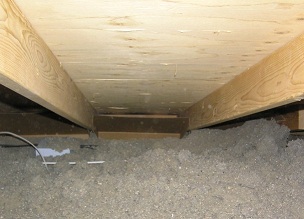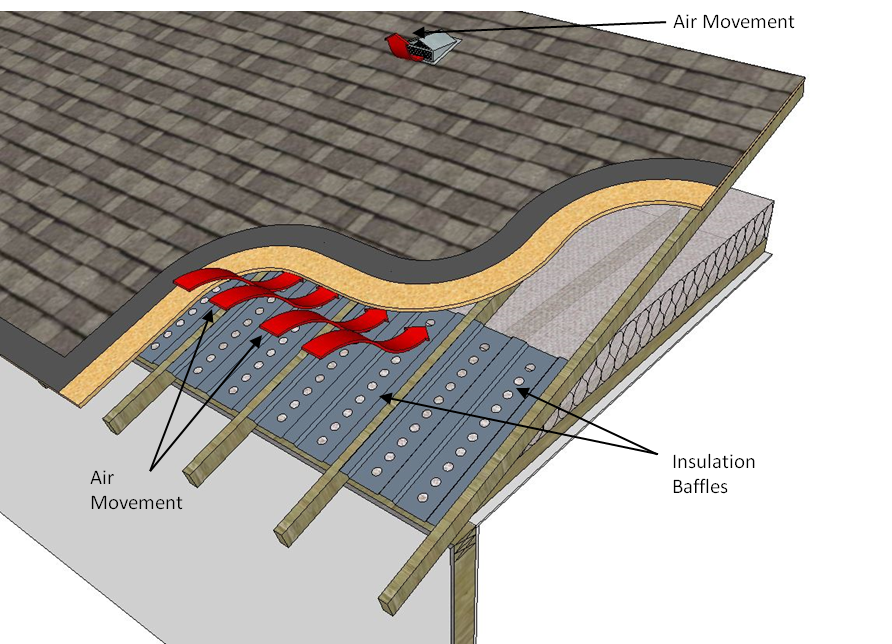Roofs with radiant barrier have the potential to lower the temp at night because the radiant barrier prevented the heat loss that would typically occur from the traditional mass insulation on the attic floor rising to heat the roof.
Roof baffle radiant heat.
The most effective radiant barrier sheathing is a structural roof sheathing panel which consists of an osb panel with heat reflecting foil laminated to one side.
Don t get me wrong foam is a great product but if you had to choose one or the other i d go with radiant barrier because it actually blocks the heat.
The hot roof material then radiates its gained heat energy onto the cooler attic surfaces including the air ducts and the attic floor.
The baffle vents can function as radiant barriers by providing the baffle vents with a reflecting coating s or reflective surface s.
Other kinds of radiant barriers combine reflective materials usually aluminium foil with materials like plastic films cardboard and kraft paper.
It is important to create a pathway for cool air to come in the bottom of the attic and heated air to go out the top of the attic.
The baffle vents can function as radiant collectors by positioning solar thermal collectors in the air flow channels defined by the baffle vents and darkening the lower surface of the roof sheeting plane.
Radiant barrier blocks 97 of radiant heat meaning it stops it from entering the attic space and ultimately the home.
This means radiant barrier can increase the life of the roof shingles.
A radiant barrier reduces the radiant heat transfer from the underside of the roof to the other surfaces in the attic.
It can easily be 120º or more even if the air temperature is only 100º.
Radiant barriers are highly reflective materials designed to block radiant heat transfer.
When the sun hits the roof the sheathing warms up and radiates heat which in turn heats upthe rafters air handlers ducts and anything else in the attic space making for a hotter attic andtherefore a hotter home.
This is really what drives heat flow the top surface temperature of the insulation.
Research conducted at oak ridge national laboratory has shown that the effectiveness of radiant barriers is minimal if you have proper insulation many radiant barrier manufacturers aren t telling the truth.
Radiantguard radiant barrier foil insulation installed in an attics can reduce attic temperatures by up to 30 degrees when stapled with a staple gun to the underside of roof rafters by reflecting up to 97 of the radiant heat that strikes its surface thereby reducing heat transfer from the attic to living spaces resulting in lower utility bills.










